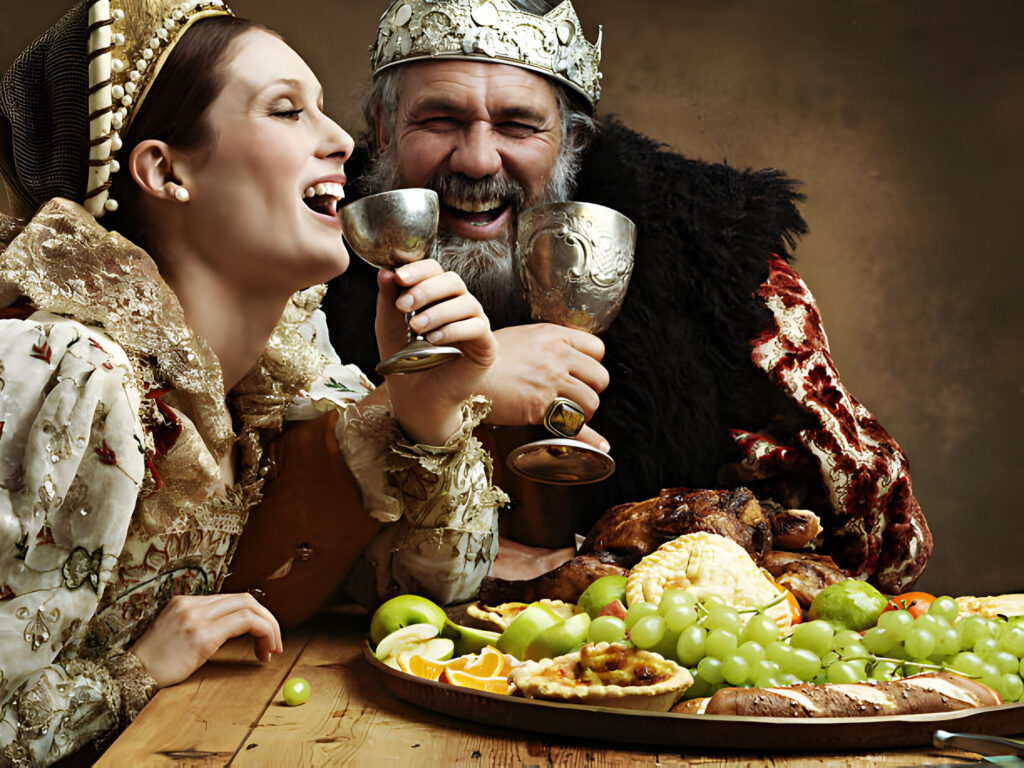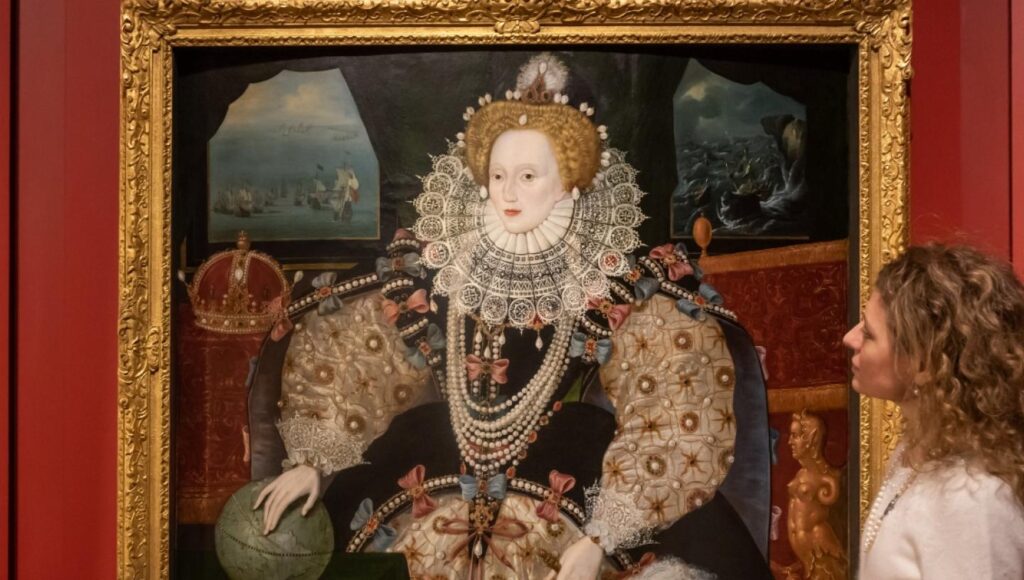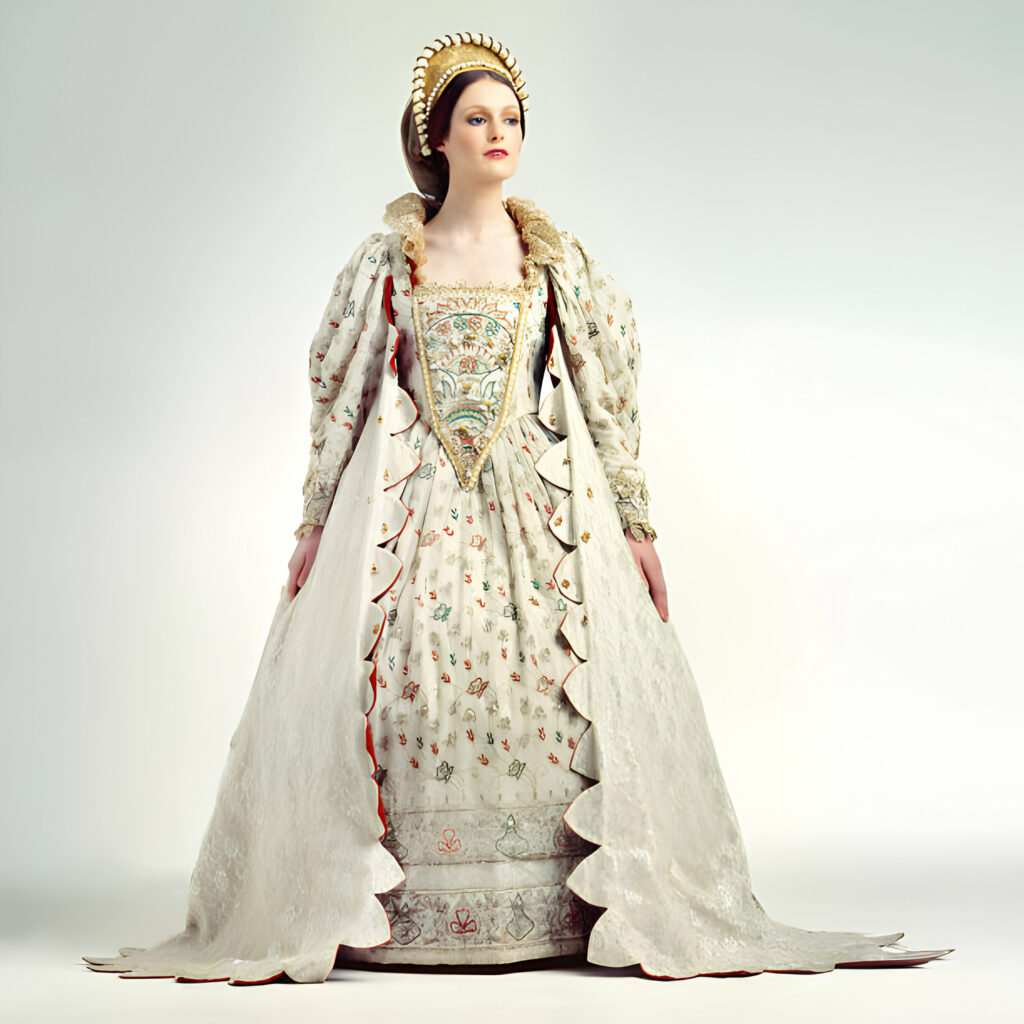
Few eras capture the imagination quite like Elizabethan England. The Virgin Queen herself cuts an iconic figure, bedecked in pearls and pastel finery, fiery red hair aglow under elaborate ruffs. Such a recognizable look – but what’s behind the origins of her majestic style? Let’s step back into 16th-century royal courts to uncover the sumptuous fashion trends that shaped the Elizabethan aesthetic into the pinnacle of historical intrigue and indulgence.
Queen Elizabeth I reigned over England’s Golden Age from 1558 to 1603, presiding over a cultural renaissance as playwrights like Shakespeare rose to fame. During this progressive, prosperous era, fashion doors opened to extravagant new possibilities. Nobility moved away from the rigid dress formulas of decades prior into an age celebrating melodramatic silhouettes, exuberant patterns, lavish embroidery, and riotous accessories.

The iconic symbol of the Elizabethan style has to be the dramatic ruff. Early in Elizabeth’s reign, men and women adopted starched linen or lace cartwheel collars laid over undergarments called “partlets” to frame the face. Over time, fashion-conscious nobles engaged in such enthusiastic one-upmanship with their ruffs that the neckline accessories eventually dwarfed heads entirely! Ruffs evolved from practical shirt collars into delicate status symbols requiring elaborate scaffolding, wiring and the finest of lacework to uphold their extraordinary proportions without collapsing.
Another signature staple of Elizabethan attire – the robe à l’anglaise. While technically French in origin, English nobility made this new loose gown silhouette their own by the late 1500s. Often cut from rich patterned silks or brocades, these square-necked ankle or floor-length dresses with fitted sleeves feature open, flowing skirts to highlight colorful kirtle and underskirt layers in contrasting textures and colors. Ladies layered on fur tippets, capes, veils and gloves for warmth against chill castle corridors.

While ladies of nobility paraded in exuberantly hued Chinese silks and shimmering brocades, no material carried more weight (and value) than flexible worsted wool and velvet. These luxurious fabrics held shape well, perfect for emphasizing the era’s highly structured bodices stiffened with buckram to achieve fashionably narrow proportions. Sumptuary laws restricted lower classes from wearing such decadent textiles, keeping the velvet lifestyle squarely in the aristocratic domain.
The overly exaggerated puff “trunk” sleeves ballooning over snug, slashed undersleeves remain one of the most identifiable Elizabethan fashion trends. Toward the later decades, styles shifted from tight curving shoulders and high armholes to low necklines, flat collars, and dramatically winged sleeves trailing to the floor in profoundly impractical (but impressively ostentatious) dimensions. A gentleman could boast blue velvet outer sleeves over contrasting pumpkin undersleeves, for example, while perfumed lace foamed from the shirt cuffs.
While earlier Tudor nobility interpreted status through strict dress formulas indicating economic means, Elizabethan fashion reflected creative identity and vivacious individual taste. At the height of imperialism with Eastern trade routes pouring in exotic luxuries, English tastes shifted from plain wool practicalities into relishing vibrant colors and textures. The newest Spanish embroidery style or Italian silk weaving technique signified one’s worldly knowledge and privilege.
Queen Elizabeth herself set the tone for extravagance, dazzling visiting diplomats and dignitaries in satins beaded with pearls and gold, vivid wigs frizzed over support frames, productive ruffs atop gowns in all colors of the rainbow. Her favorites gleefully followed suit, as did those aspiring to her inner circles.
In many ways, Elizabethan clothing reflects how London flourished into a cosmopolitan cultural epicenter during a golden age of exploration and innovation. We still channel this era today precisely due its creativity, bold patterns, rich fabrications and silhouettes exaggerating the human form into otherworldly dimensions. In our current climate of increased customization and hunger for self-expression, the directional Elizabethan eye for dynamic drama and flair proves more inspiring than ever.